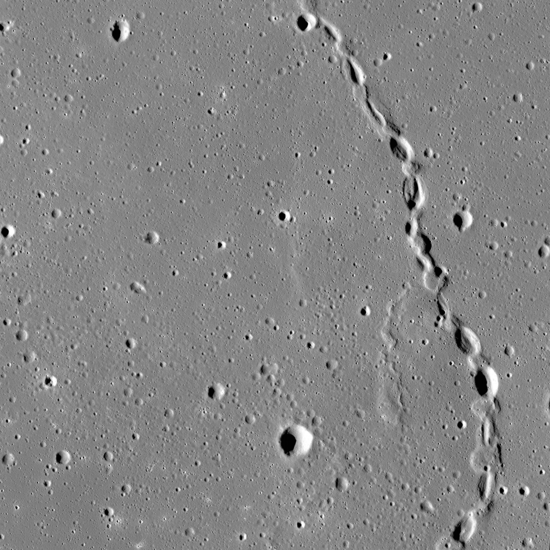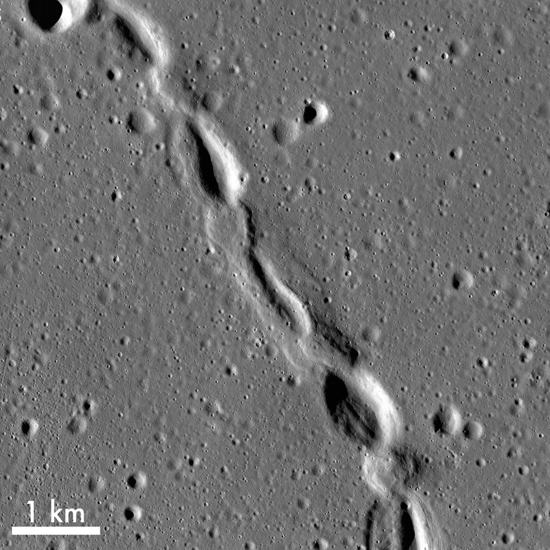The presented image was obtained by the LRO spacecraft. It shows a fragment of a strange winding formation that stretched like a snake through Oceanus Procellarum.

The total length of this “snake” is 48 km, it is located near the 6-kilometer Gruithuisen K crater. The structure is a chain consisting of ridges, elliptical and curved pits. But what is it? Scientists think that this is nothing more than a collapsed lava tube.
Lava tubes are formed as a result of the eruption of basalt lava when it cools and crusts. This crust insulates the lava, allowing it to flow further over long distances. After some time, possibly as a result of seismic events or a meteorite impact, lava tubes may undergo destruction. As a result, a chain of pits is formed along its bed.

In the case of the photographed structure by LRO, the source of the lava flow may be a large crater-shaped formation of irregular shape, which can be seen in the upper left corner of the image. According to planetary scientists, the total width of the tube reaches 500 meters.
Since the lunar surface is experiencing strong temperature changes, as well as being exposed to cosmic radiation and meteorite impacts, some engineers believe that lava tubes are the best place to create bases. Perhaps in the future one of these structures will become a home for lunar colonists.
According to https://www.lroc.asu.edu
Follow us on Twitter to get the most interesting space news in time
https://twitter.com/ust_magazine
